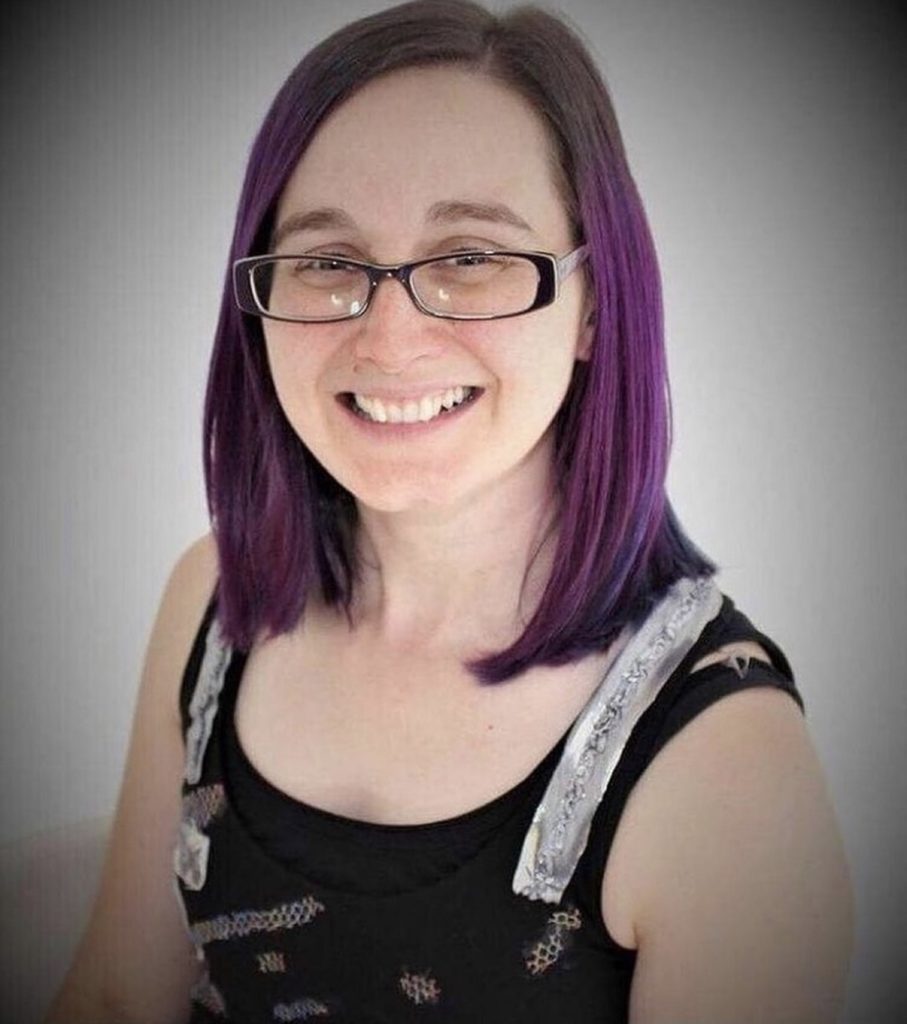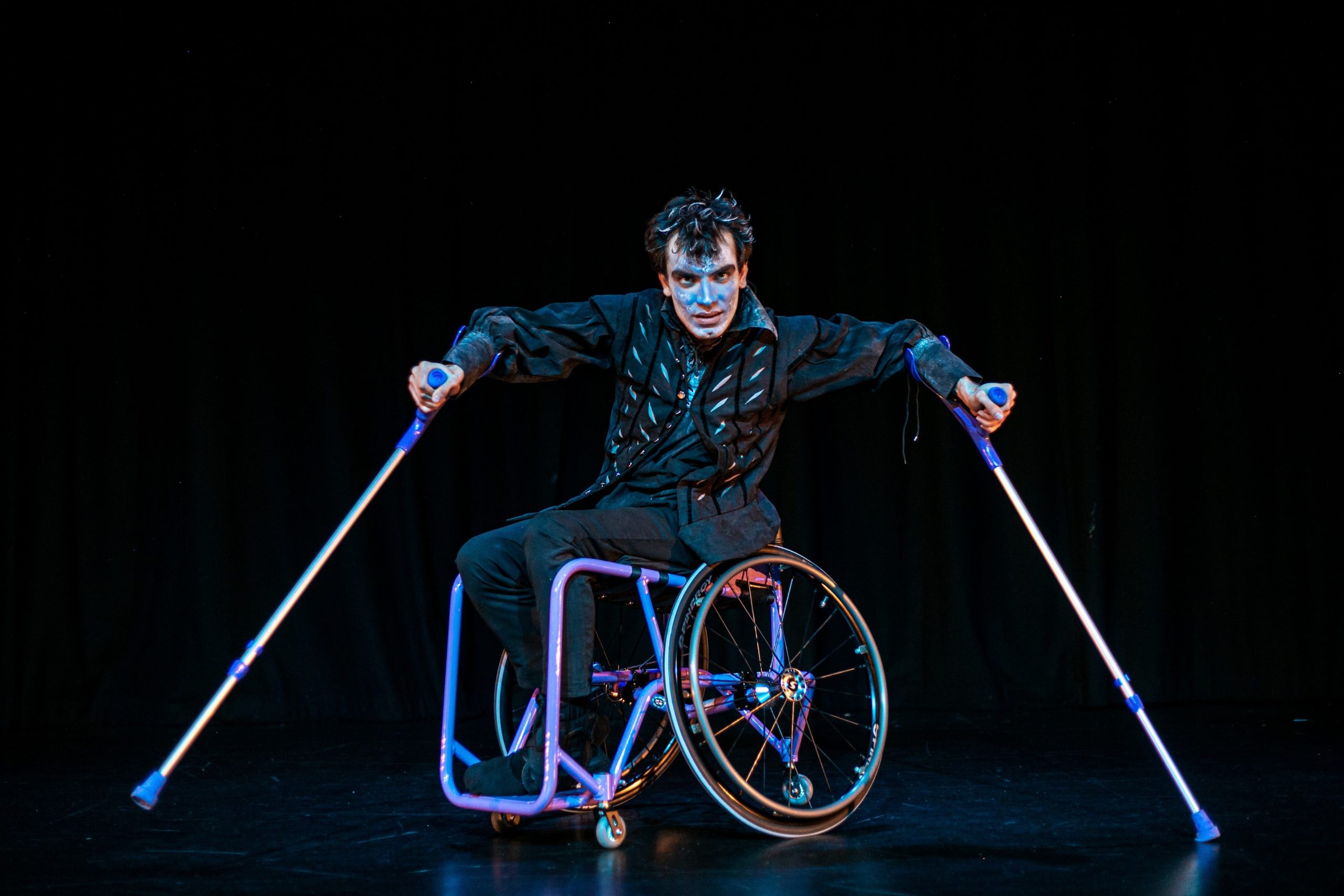Words by Katie Hagan.
Propel Dance is on a mission. Formed in 2022 Propel Dance, spearheaded by Helen Mason, is the first all-wheelchair user professional dance company of its kind.
Although a relatively new company, Propel Dance as a concept was in the pipeline for much longer and is a culmination of Helen’s years of knowledge and work in the inclusive dance field.
We sat down with Helen to find out more about why she created Propel Dance, its first sold-out R&D tour of The Snow Queen around the Midlands and how Propel is providing more jobs for wheelchair dancers of the future.
DAJ: Hi, Helen! Tell us about yourself.
Helen: My name is Helen, and I am the artistic director of Propel Dance. I’m also a dance teacher and artist. I’ve worked in disability or inclusive dance for many years and have collaborated on commissioned work and choreography for all audiences in different spaces. I’ve made inclusive work with collaborators in museums, fields, even train stations!
DAJ: Why did you decide to create Propel Dance now in your career?
Helen: Part of my work over the past six years has been with Freewheelin Dance which I set up in 2017 after working with community groups. Whilst working with different community groups I felt like I personally had to develop the way I approached making choreography for wheelchair users….
DAJ: Is that because of a gap in your knowledge?
Helen: It was totally a gap in my knowledge. I think a lot of dance teachers like me, at a similar point in their career, feel the same. Typically, and historically, inclusive dance wasn’t part of our training. Our education was based on teaching non-disabled standing dancers.
So, a few years ago I went to train at Para Dance UK and did their wheelchair instructors course and became a member of Para Dance and learnt about choreography specifically for wheelchair users. From here Freewheelin was created.
DAJ: Freewheelin Dance fills a huge gap in providing community dance classes for wheelchair users in the Midlands. You have also won national dance competitions. Do you recall thinking about creating opportunities for the dancers to become professional?
Helen: Myself and the dancers felt they were ready to go on to be professional either through an apprenticeship or degree courses. There was and continues to be a lack of provision here in the Midlands unless you go to London to work with the likes of Candoco or Stopgap. For a lot of disabled artists travelling to these classes from elsewhere in the UK is a barrier.
So, I thought to myself, Can I set up a training programme? And that’s where it started. I chatted to other wheelchair dancers to see what their feedback would be. They were onboard with the idea and that it’s great. But they also questioned where the jobs will be at the end as, when you think about it, there are 3-4 companies in the UK that employ wheelchair dancers specifically. Of those companies there are 1-2 spots.
DAJ: Did this inform your decision to create Propel Dance?
Helen: Absolutely, if it wasn’t for my Freewheelin group and their real world lived experiences, I wouldn’t have started Propel Dance. There was a need to create apprenticeships and jobs, and this is where Propel came from.
We established genuine interest in an all-wheelchair company from audiences, performers and venues. It started around two years ago now and has snowballed into something way bigger than we expected.
During our R&D period, we had four professional dancers and one apprentice and going forward we want to increase the number of apprentices.

DAJ: What does choreography look like for wheelchair users?
Helen: The Snow Queen choreography, which we’ve just taken on our first R&D tour, is contemporary dance combined with wheelchair technique typically used in paradance sport.
Paradance is an art form that’s been around since the 60s, perhaps even before. It was originally for people who hadbecome disabled in their life and was used for recreational and rehabilitation purposes.
Paradance is mainly Ballroom and Latin styles often performed as solos, duos or a combi, which is where a wheelchair user and standing dancer are together. The form has its own language, i.e., arc turn, spin turn, eighth turn, wheelies, pivots… and other wheelchair specific movements.
For The Snow Queen we have taken these elements and mixed with them contemporary dance.
DAJ: Could you tell us more about The Snow Queen?
Helen: As part of our R&D we did performances in The Old Library in Mansfield, Midlands Arts Centre (MAC) in Birmingham and Arena Theatre in Wolverhampton. So many people came! Disabled audiences travelled from across the UK because they’d never felt seen onstage before in this way.
We also quadrupled the number of wheelchair user audience members. We did this because we wanted to bring representation offstage as well as on. So many wheelchair users can’t go to shows together as there physically aren’t spaces in theatres, and if they want to, they must plan way ahead.
To ensure the venues would meet our access requirements, we chatted to every theatre and asked if they could make space; if they have wide doorways; if that have disabled toilets; is it raised; what are the wings like? All the venues were amazing.
DAJ: What does good access look like to you?
Helen: During the R&D we were very much trying to build it around the dancers. We had a fabulous access officer called Rick Rogers who went through access riders. We used those to inform our schedule and working process, i.e., we wouldn’t dance for more than two hours at a time, and we’d have a break to manage fatigue and so on. There was a quiet room with pillows for the dancers to rest their bodies.
We looked out for one another and always prioritised health. Health is way more important than a show. In the long run you don’t want your dancers to burn out or get injured. And often the culture in the dance world is that you push the body to its limits. This does not come from a place of true care and puts dancers at risk of injury that can leave them out of work for months.
DAJ: What’s next for The Snow Queen?
Helen: The next steps are to secure more funding and then take the R&D that we did nationally into schools and sports halls that have more capacity for wheelchair users but still give that theatre-feel.
We’re still a very small team. There’s such a need for what we’re doing and we’re all working really hard to provide it.

Header photo by Dani Bower.
